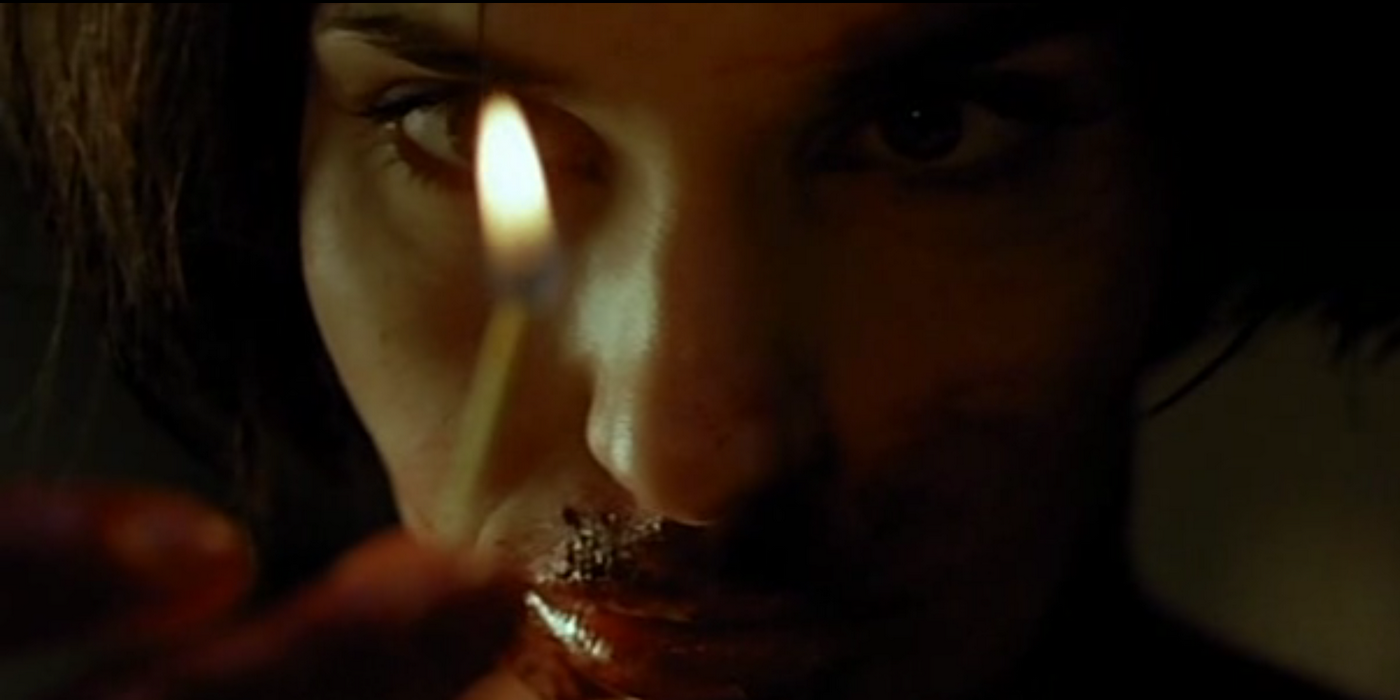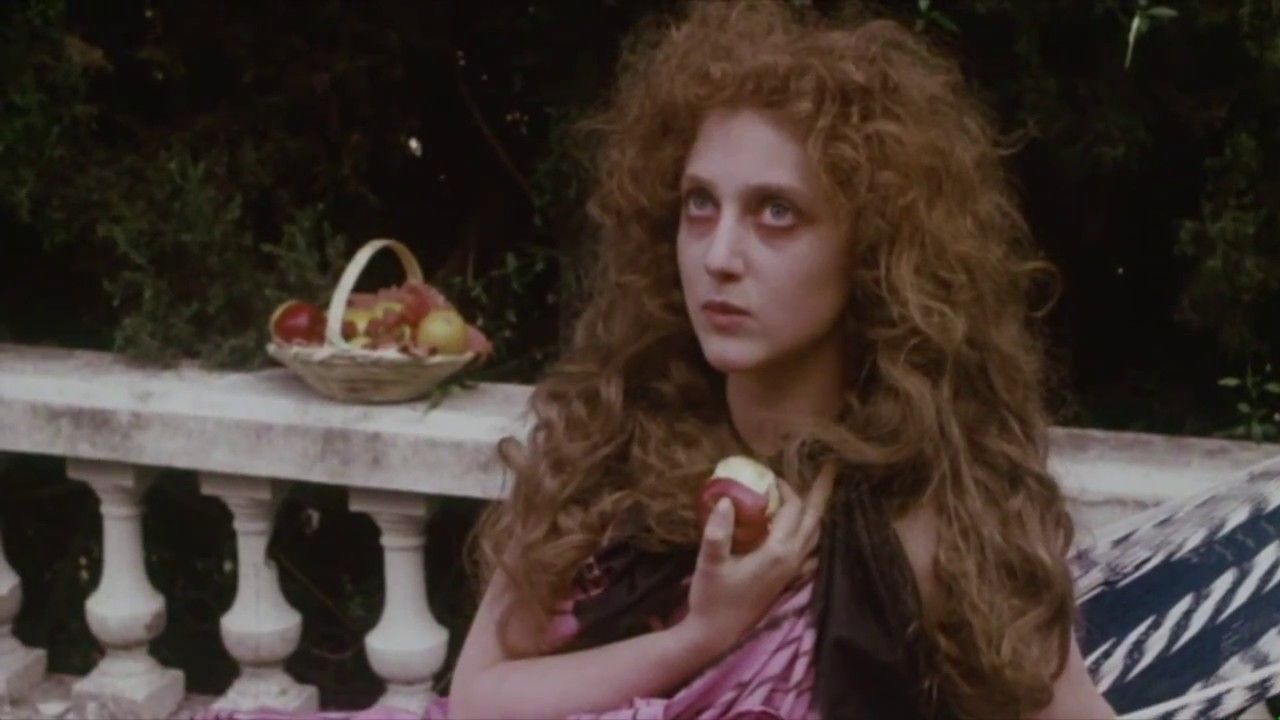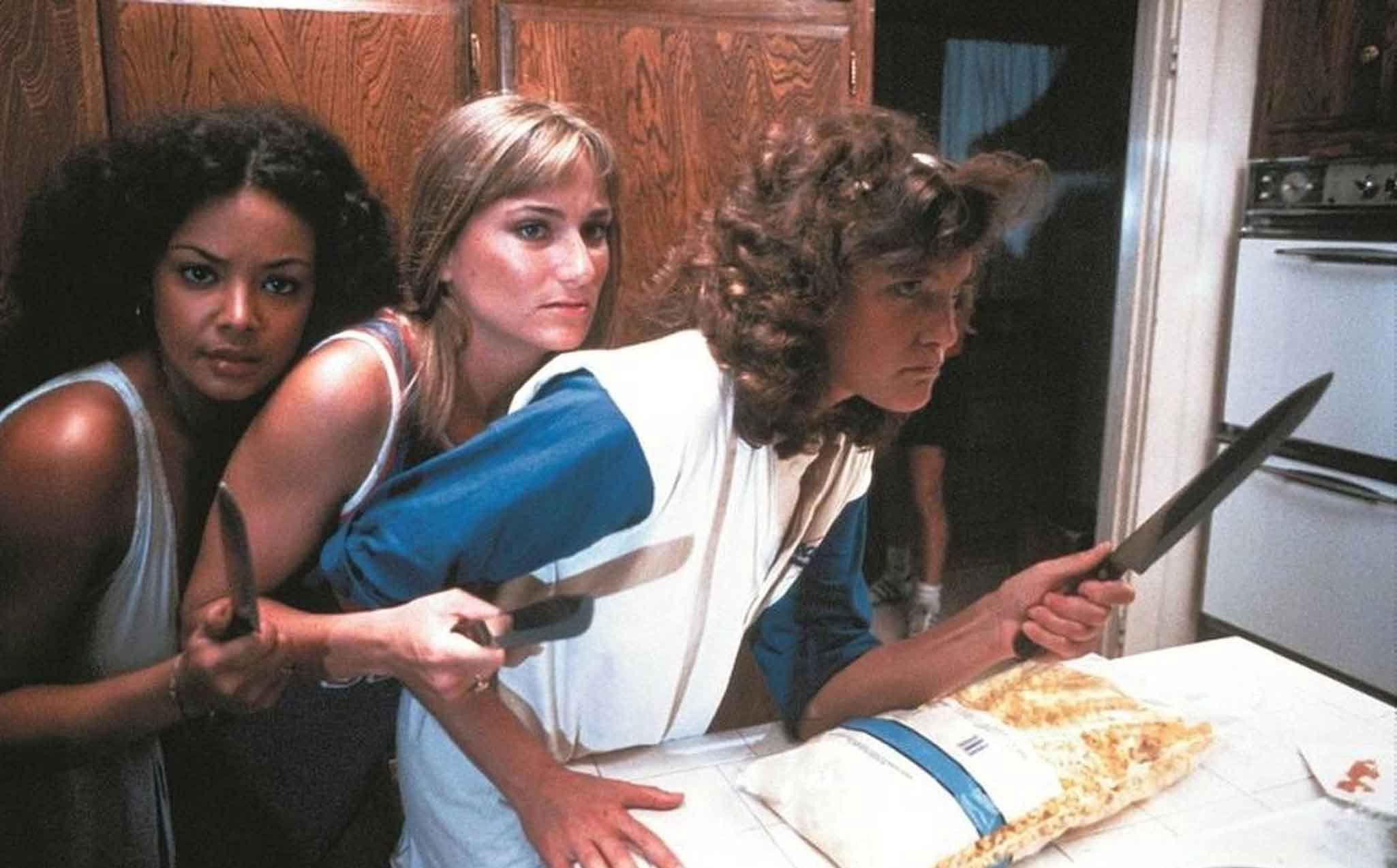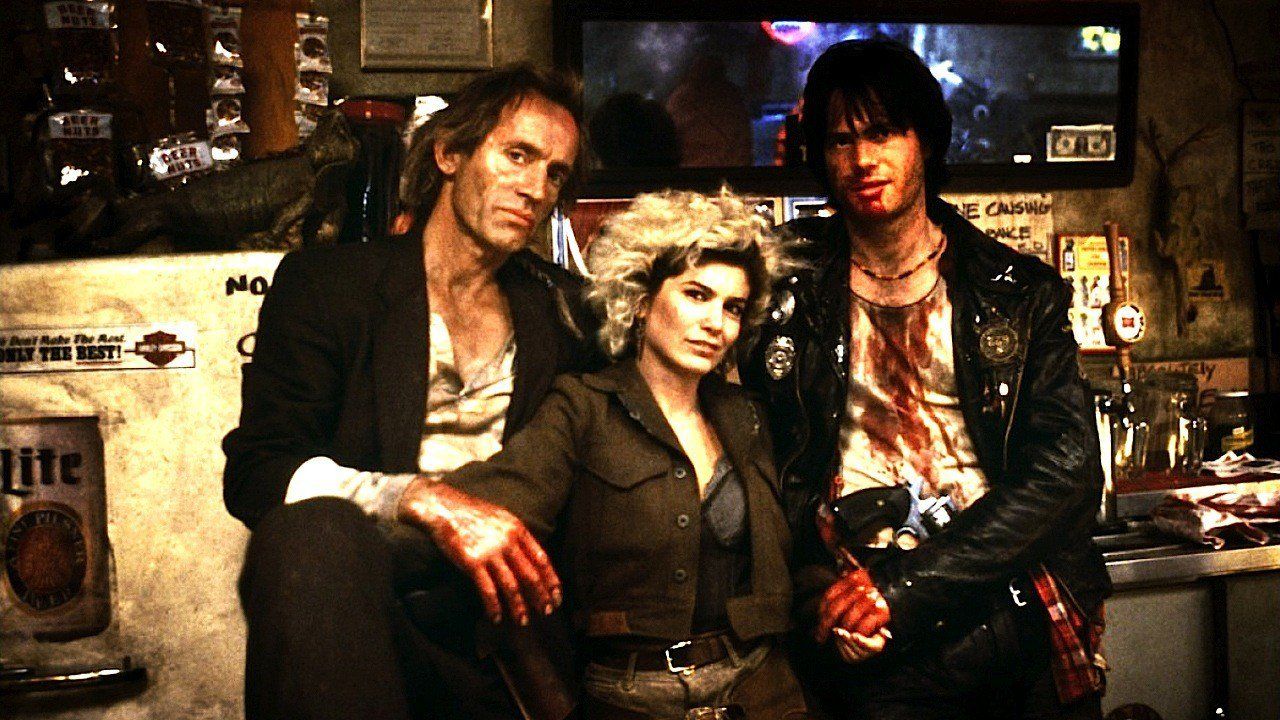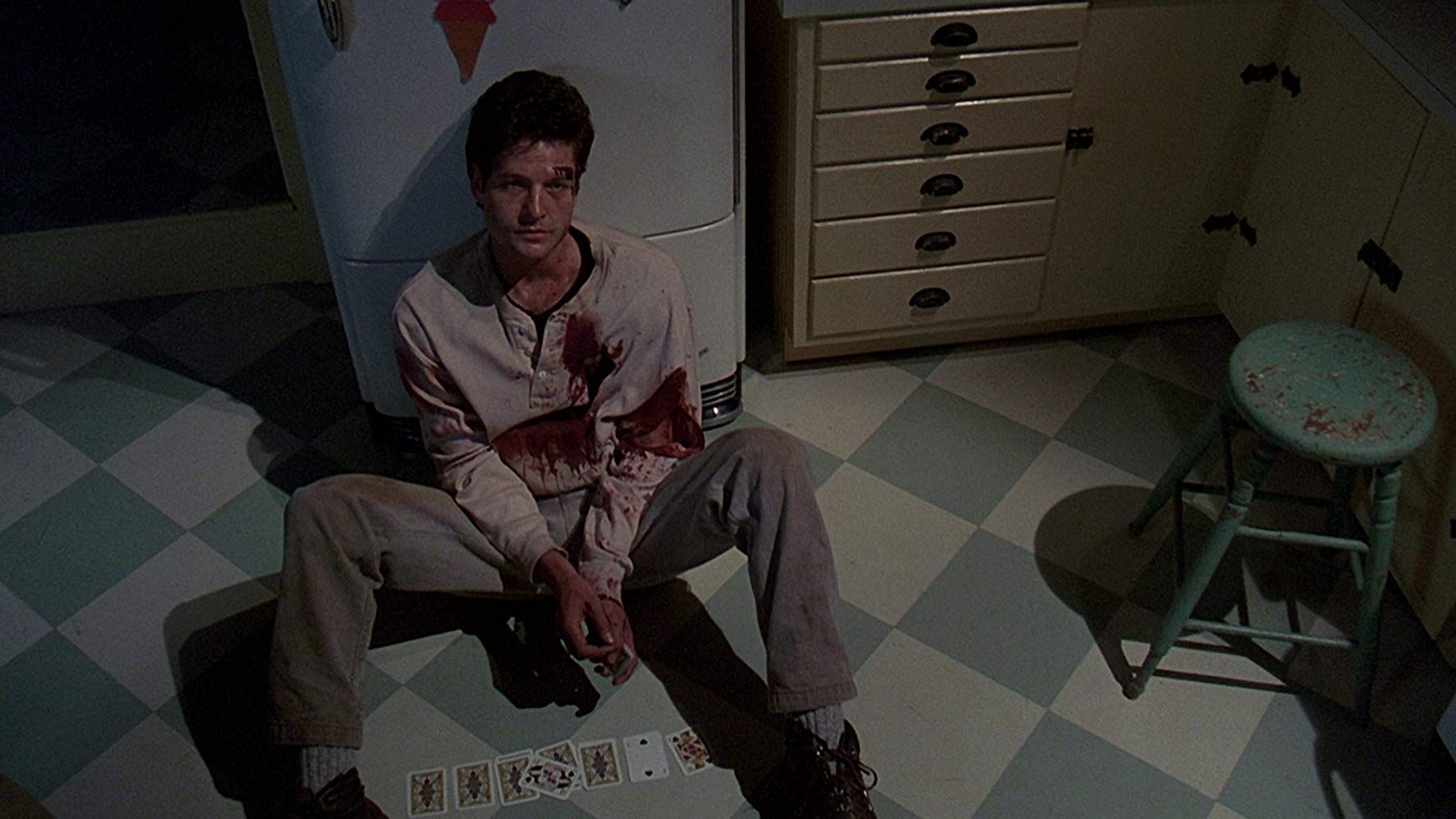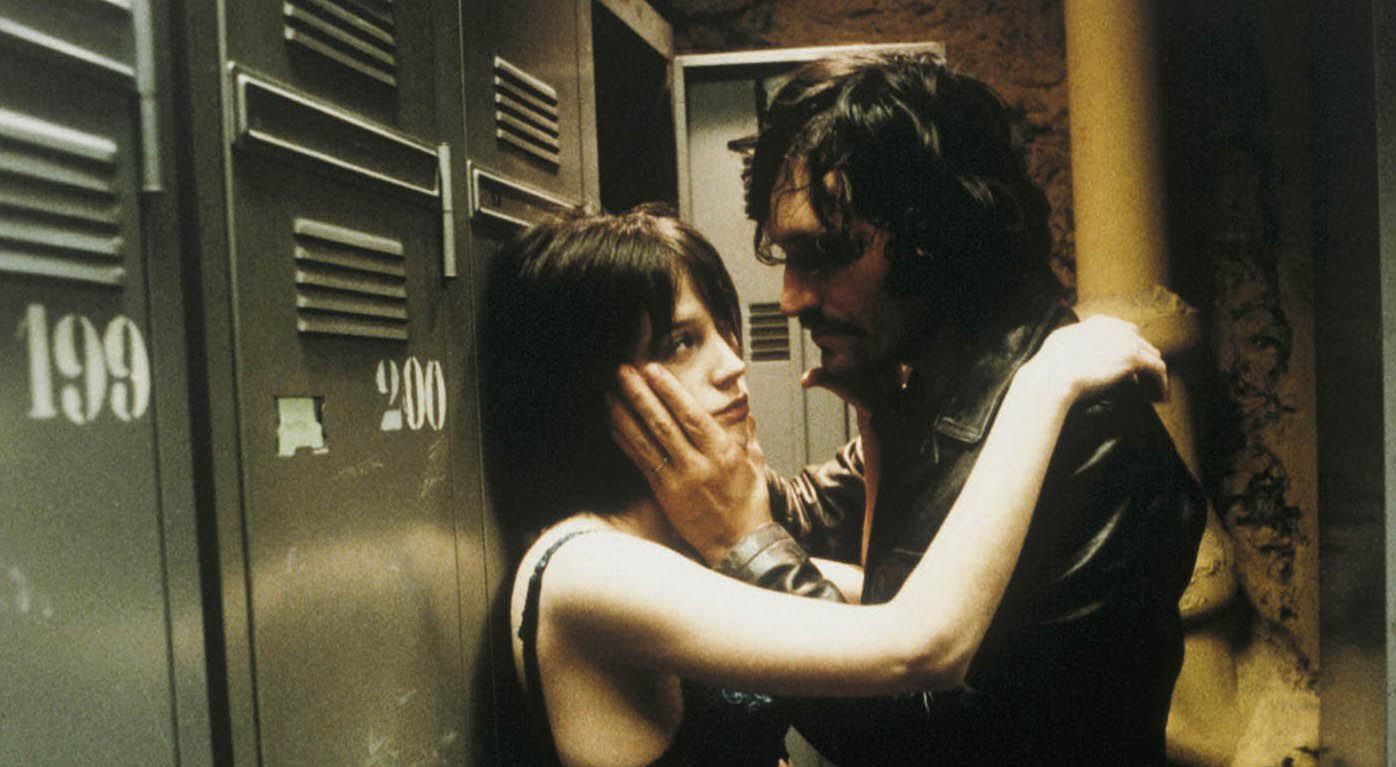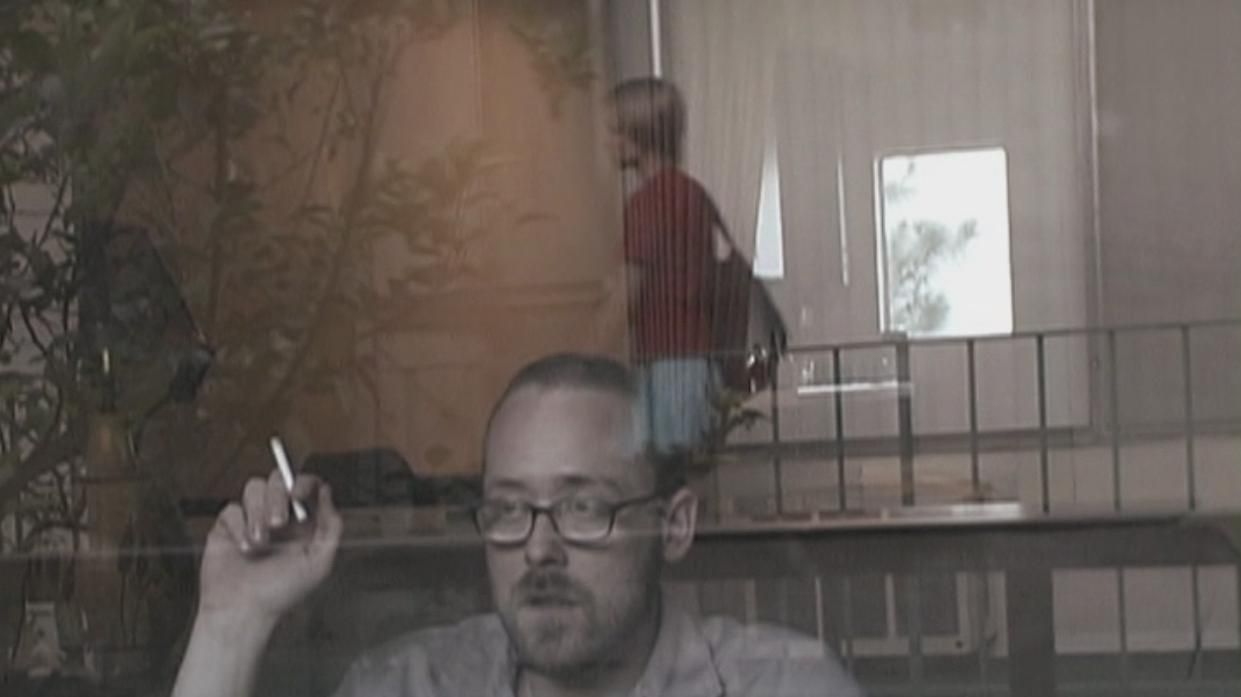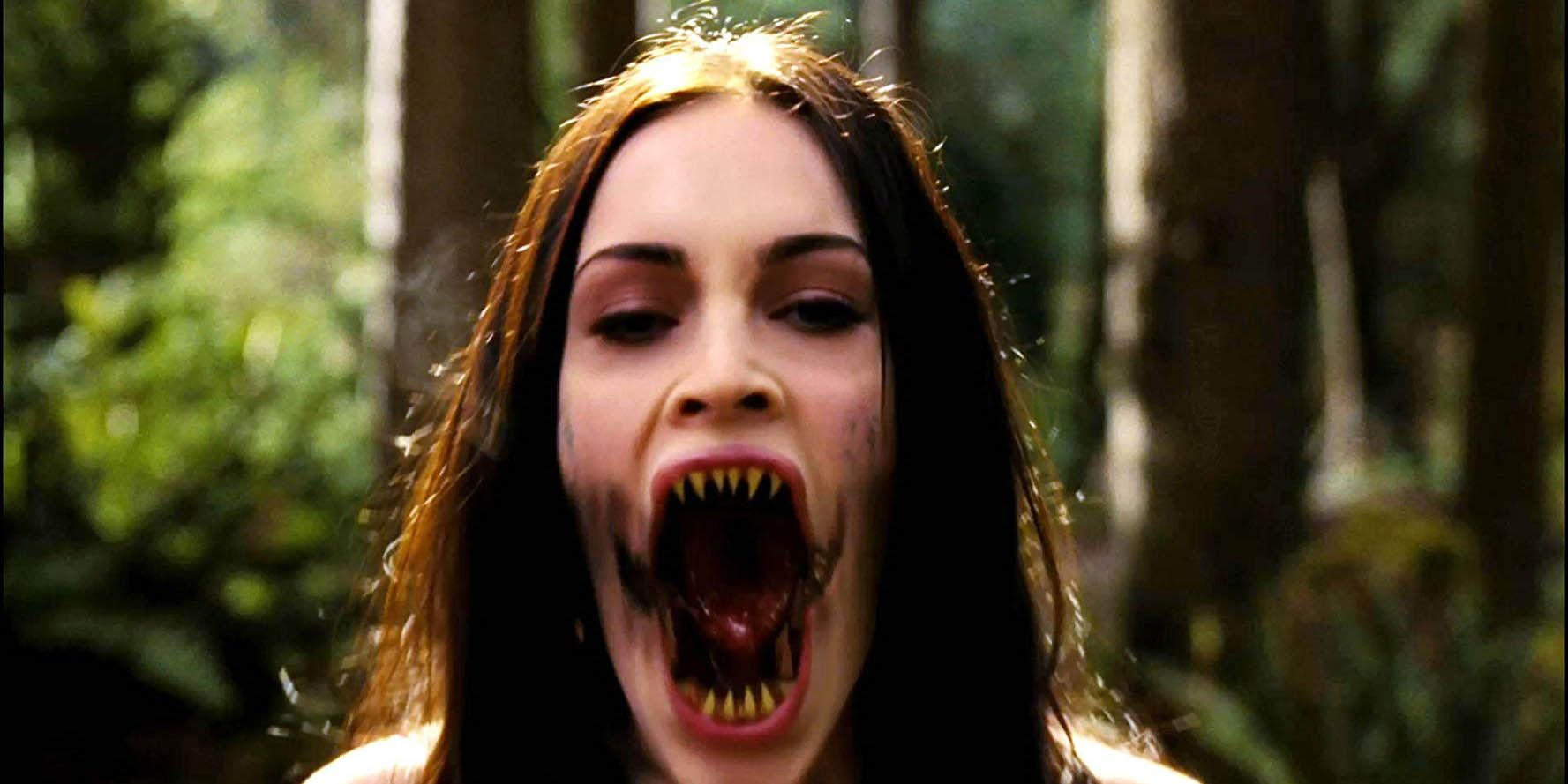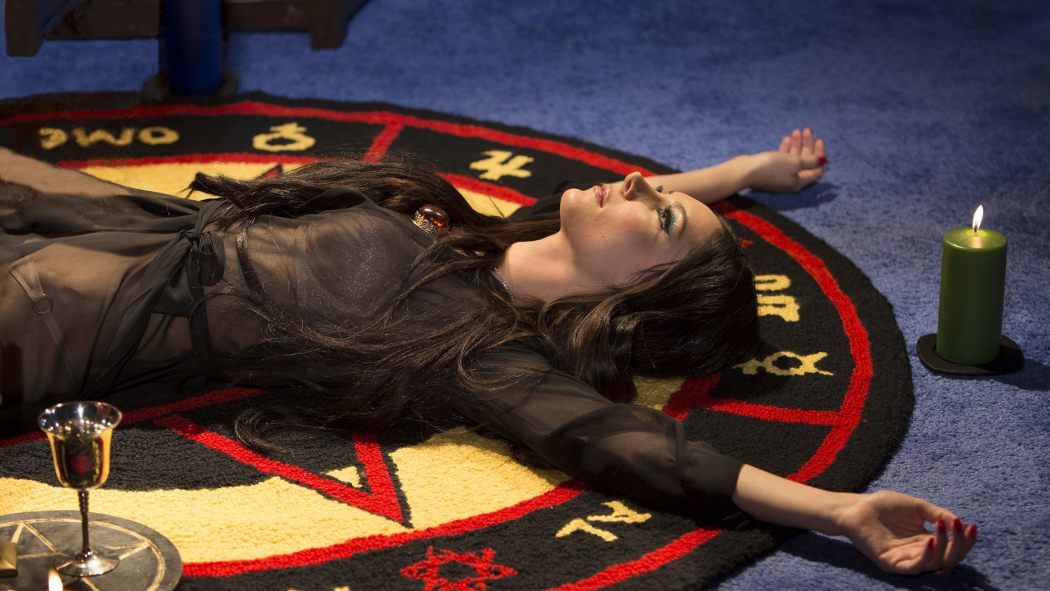Despite what you may have heard, women have always ruled horror. The genre's roots back to Mary Shelley, whom at the tender age of 20, unleashed Frankenstein; or, The Modern Prometheus on an unsuspecting public in 1818, in essence, giving birth to modern horror and all that was to follow.
Of course, as in many art forms, the "boys club" culture reigns and we've got a long way to go to challenge that, but horror, that most fringe of genres, has always had room for and embraced strong female voices, nevermind what Jason Blum believes. Following are ten examples of the unique power of the female director in horror cinema.
The Mafu Cage (1978)
Karen Arthur’s film about an astronomer, Ellen who does her damndest to take care of her feral sister after the death of their anthropologist father features a career-best early performance by Carol Kane as the childlike and violent Sissy.
Raised in the wilds of Africa, wild-haired, bare-footed, and forever babbling about her “mafus” (apes that she loves literally to death), Kane’s character is one of cinema’s great forgotten madwomen. Arthur, along with screenwriter Don Chastain stage the destruction of the sisters with a sense of cruel fate that's almost Shakespearean. Whether The Mafu Cage is racist and trades in Afro-Orientalism or is actually an anti-colonialist screed is up to the viewer to decide, but there’s no denying that this character-study is disturbingly effective and utterly unforgettable.
Slumber Party Massacre (1982)
Amy Holden Jones (who made a name for herself as the screenwriter of Mystic Pizza and co-created Fox’s The Resident) famously passed up the chance to edit E.T. to direct this slasher penned by feminist thinker, Rita Mae Brown. Shooting with a four-person crew in 35mm for independent cinema maven Roger Corman, Slumber Party Massacre was a tiny production that nonetheless allowed Jones to take a spin in the director’s chair, an opportunity that eluded her at larger studios.
What makes the film so special is the gently satirical nature of Brown’s script, which turns the typical girls-in-peril narrative into a light-hearted feminist take on the ever-problematic slasher genre. Somewhat frustratingly, Jones and her producers were more interested in shooting a straightforward horror feature than a spoof, so the parodic tone is often barely detectable, but the feminist backbone of Brown’s script remains intact, making Slumber Party Massacre an essential entry in the 80s slasher canon.
Near Dark (1987)
As the only woman to ever nab a best director Oscar (and one of the only five nominated for the award in the institution’s 91-year history) it’s interesting to note that Kathryn Bigelow’s filmography is peppered with genre exercises that most film snobs would turn their noses up at. One such oddity is the neo-western Near Dark, which stars Jenny Wright, Lance Henrikson, and Bill Paxton as a band of drifting vampires who attempt to educate a freshly-sired youngster (Adrian Pasdar) in their own ways.
Birthed from Bigelow’s desire to direct an offbeat Western, she and co-writer Eric Red adopted vampire lore to capitalize on the popularity of Tom Holland’s (not Spider-Man) Fright Night, resulting in a disgusting and outrageous hybrid that failed to catch fire at the box-office but has aged remarkably well. Both poetic and extravagantly bloody, Near Dark is kickass reimagining of the vampire mythos that first displayed the deft directorial hand that Bigelow would use to make film history decades later.
Pet Sematary (1989)
This 1989 adaptation of Pet Sematary is neither the worst or greatest Stephen King film, but it’s successful in its gauche way, and to date, the only of the writer's major works to be directed by a woman. As one of King’s darkest and most emotionally taxing novels, something is truly lost in translation, but Mary Lambert (best-known for creating music videos with Madonna and Janet Jackson) makes it all work by leaning into the EC comics vibe when things get too sticky.
The bad is bad, but the good mostly outweighs it, and something of the clammy, sick-stomach grief of King’s meanest and most painful novel manages to shine through. This year's remake may make Lambert's treatment of the story an anachronism, but its a rare mainstream horror effort helmed by a female director that occupies an immovable place in the hearts of many fans.
American Psycho (2000)
Few female filmmakers would come within spitting distance of an angry, brutally violent novel by a noted misogynist, but Mary Harron proved herself an artist of both bravery and skill when she not only agreed to adapt Bret Easton Ellis’ troublesome American Psycho but created one of the undisputed horror classics of the 2000s by teasing its indulgent depravity into sharp satire without shying away from its scenes of cruelty and femicide.
At once repugnant and hilarious, this skewering of the Wall Street generation and its “greed is good” ethos stars Christian Bale as a wealthy New York investment banker who spends his free time playing with prostitute innards. Though Ellis’ novel was long considered unadaptable, Herron did one better by flipping the story’s male gaze--her camera sweeping longingly over Bale’s absurdly fit physique in a gender-swapped showcase of gratuitous T&A--and injecting it with plenty of machismo-puncturing black humor.
Trouble Every Day (2001)
Claire Denis co-wrote and directs this love story/erotic cannibal opus about a man (Vincent Gallo) who keeps his deranged wife (Béatrice Dalle) under lock-and-key due to her bad habit of violently murdering--and occasionally eating--men.
The doyenne of French cinema brings a languorous pace to this arthouse horror flick that tends towards the soporific, but its calculated ambiguities and gritty violence marry the transcendent to the Grand-Guignol in a way that’s devilishly effective. Trouble Every Day’s influence can be felt in the DNA of other works of the French New Extremity, such as Pascal Laugier’s Martyrs (2008), and most plainly, in Julia Ducournau’s sleeper-hit Raw (2016), which traded Denis’ existential focus and willful obscurities for a more plugged-in, #woke treatment of female flesh-eaters.
Roman (2006)
Angela Bettis’ sole directorial feature and a strange work of creative cross-pollination, Roman (2006) stars horror director Lucky McKee as a gender-inverted take on the character she, herself played in his cult classic, May (2002). Roman, a lonesome young man who aches for companionship, is stuck in a life of tedium and emotional torture.
His only solace is his obsession with a beautiful neighbor (Kristen Bell), who he accidentally murders during a chance encounter. Roman is a moderately effective lo-fi chiller that really opens up when viewed as a companion piece to McKee’s earlier film. It's a fascinating experiment in which muse becomes artist and artist becomes muse--exploring the tension, give and take, push and pull, between filmmaker and subject through shared themes of obsession, loneliness, and isolation as projected through different directorial eyes and gender-perspectives.
Jennifer’s Body (2009)
Written by Diablo Cody and directed by Karyn Kusama, Jennifer’s Body was mismarketed to teenage boys and belly-flopped at the box office upon release. Luckily, in the light of the Me Too movement, meme culture, and the growing taste for all things camp (thanks RuPaul) the film is being re-discovered as a cult classic.
This tale of the man-eating she-demon Jennifer (Megan Fox) and her co-dependent friendship with the bespectacled Anita aka “Needy” (Amanda Seyfried) is equal parts Mean Girls and The Exorcist, and filled with witty barbs that the young actresses deliver splendidly. What has brought Jennifer’s Body back from the dead, however, is the way it explores themes of female friendship, patriarchal attitudes and assault through an admittedly titillating, winking horror lens.
The Love Witch (2016)
A hand-crafted, labor of love from top to bottom, Anna Biller’s follow up to Viva (2007) is another near orgiastic slice of retro stylization. Starring relative newcomer Samantha Robinson as the titular amorous enchantress, Biller creates a world of gauzy-lenses sexcapades and pink chiffon that draws upon sex comedies of the 1960s/70s and attempts to reclaim them for the women.
A truly impeccable pastiche with earnestness to spare, Biller's attention to period style is practically porn for the well-versed cinephile, and despite the studied hamminess of the thing, the finale manages to be quite devastating.
M.F.A. (2017)
Coralie Fargeat’s excellent Revenge was a game-changer when it premiered in 2018 (turning the typically exploitative rape-revenge thriller on its head with a postmodern feminist awareness and smartly executed scenes of ultra-violence), but Leah McKendrick and director Natalia Leite’s broke similar ground the year prior with this unvarnished, no-nonsense takedown of on-campus rape culture.
Starring Francesca Eastwood as a fine arts grad student who accidentally kills her rapist in a fit of rage, McKendrick and Leire stay firmly in their topical lane, mostly to the film’s benefit. A mature work that doesn’t indulge in fantasies of violence or vindication, M.F.A takes a probing look at the complex horror of sexual assault by stripping away any sense of glamor or easy resolution from the vengeance narrative.

